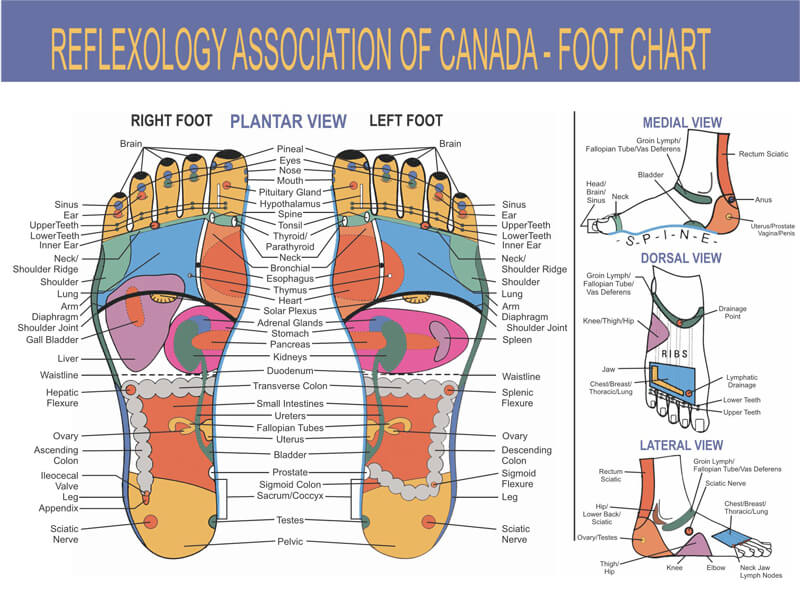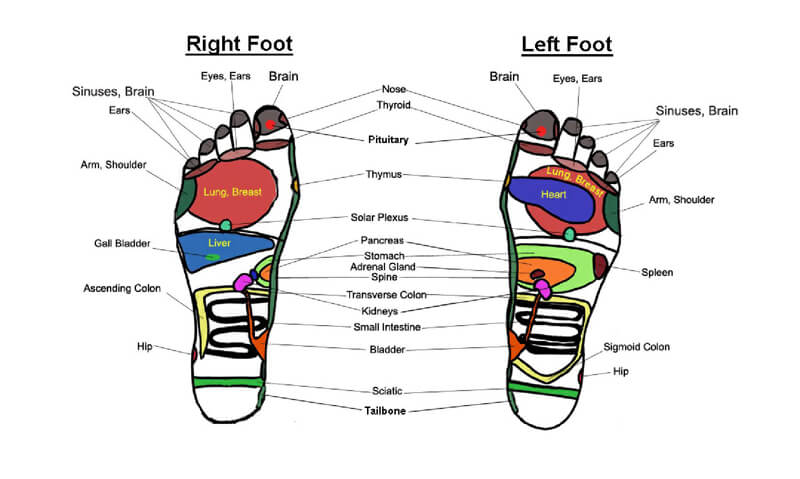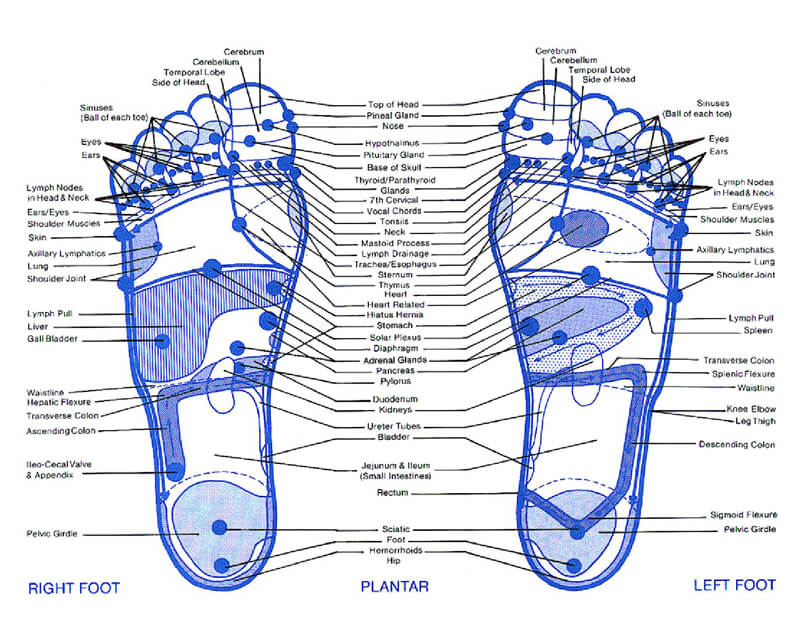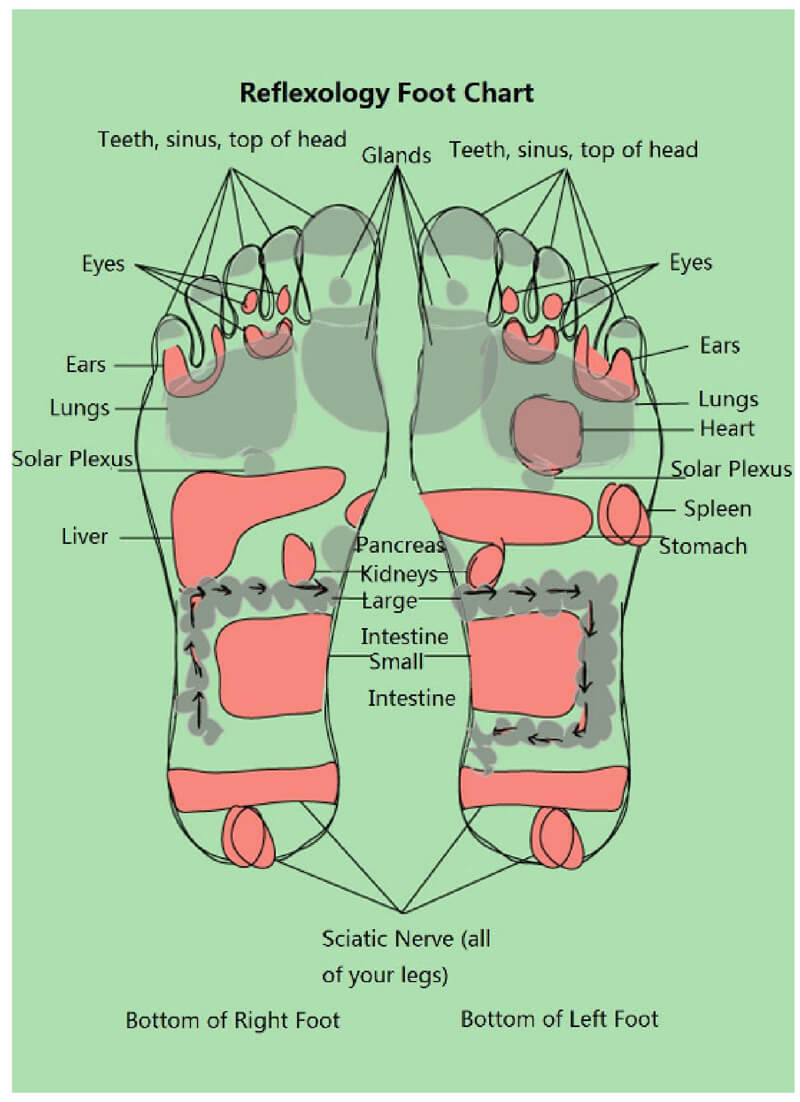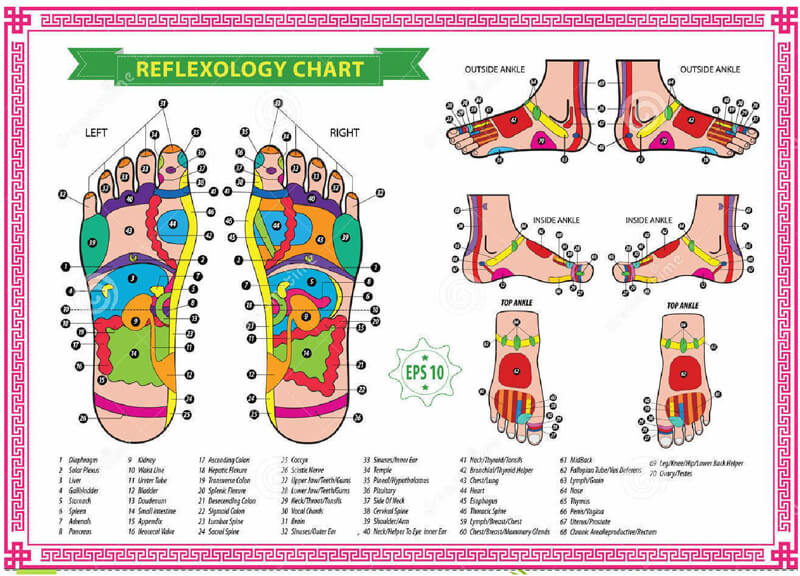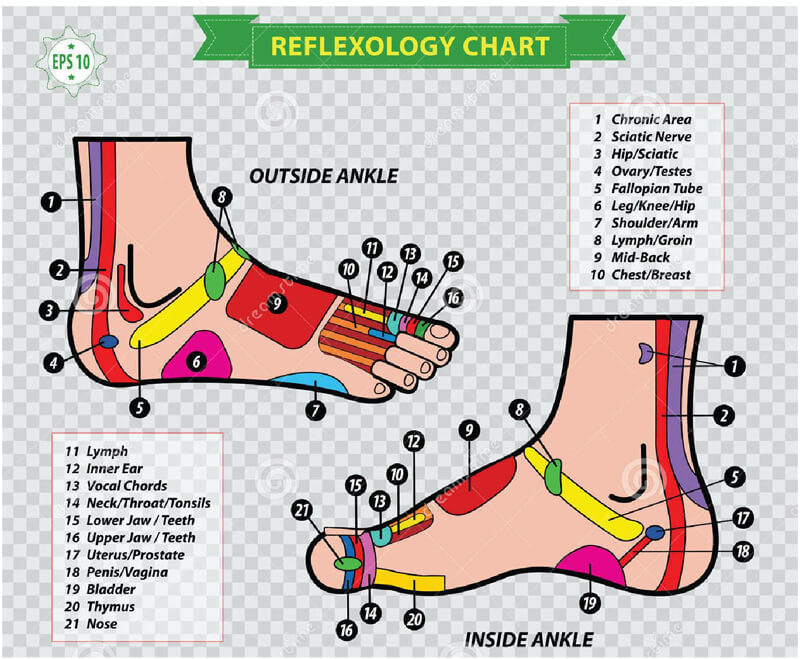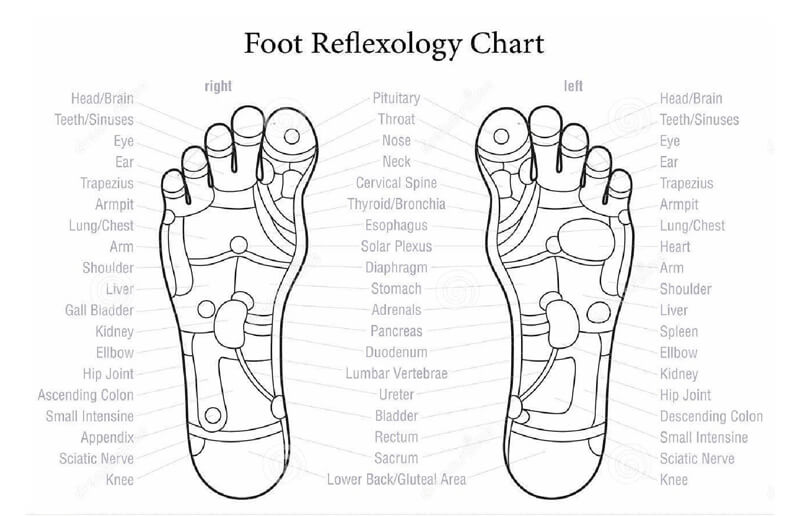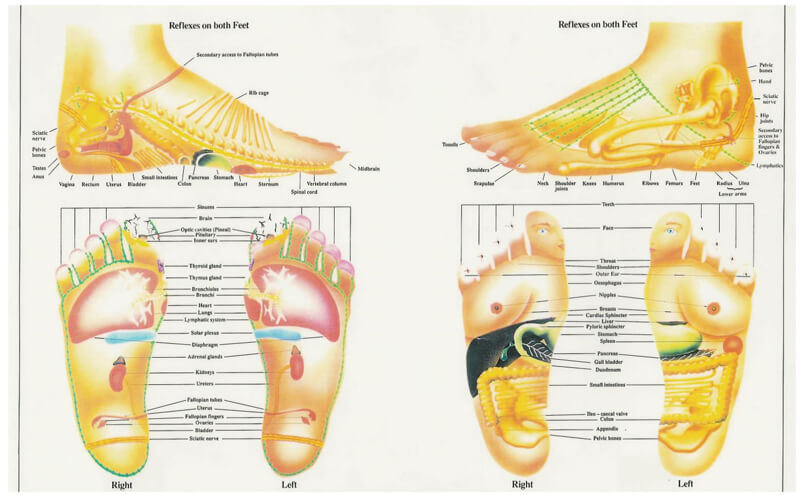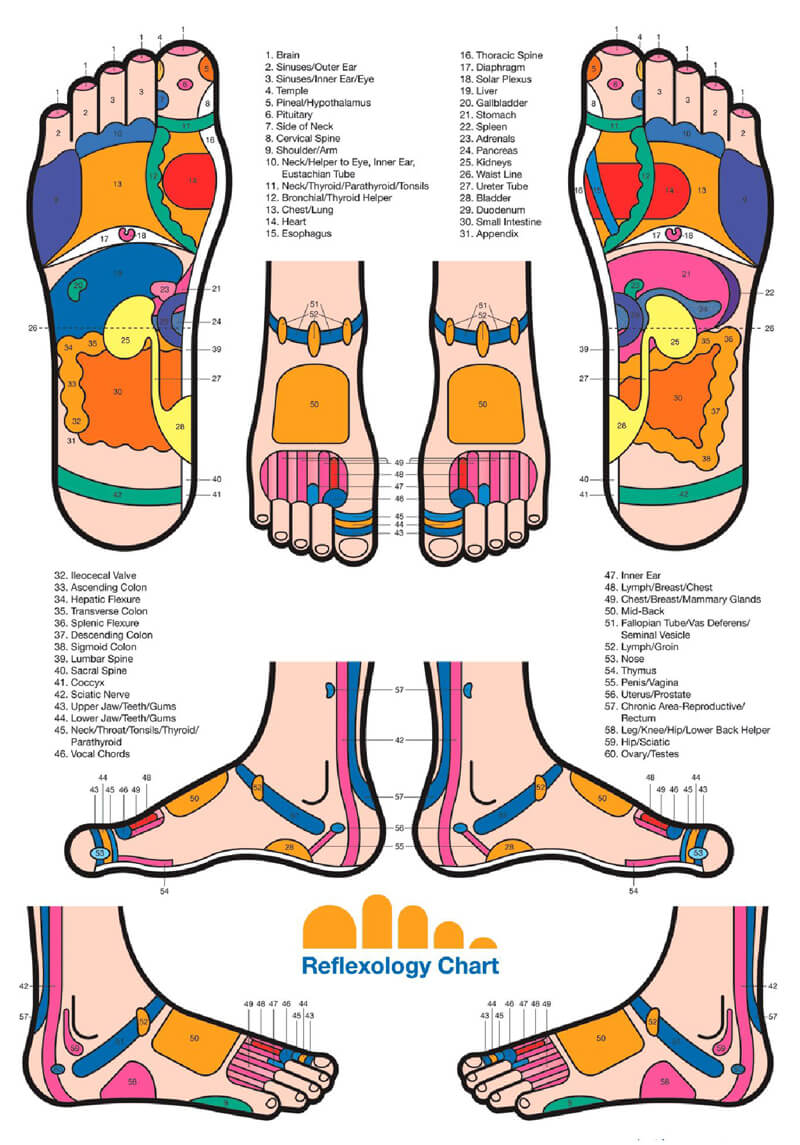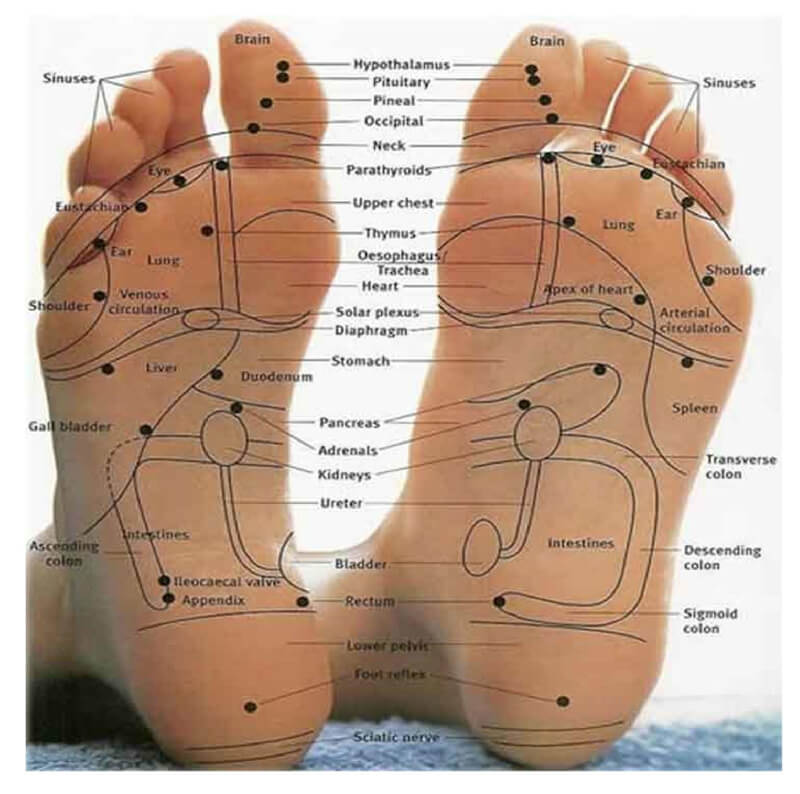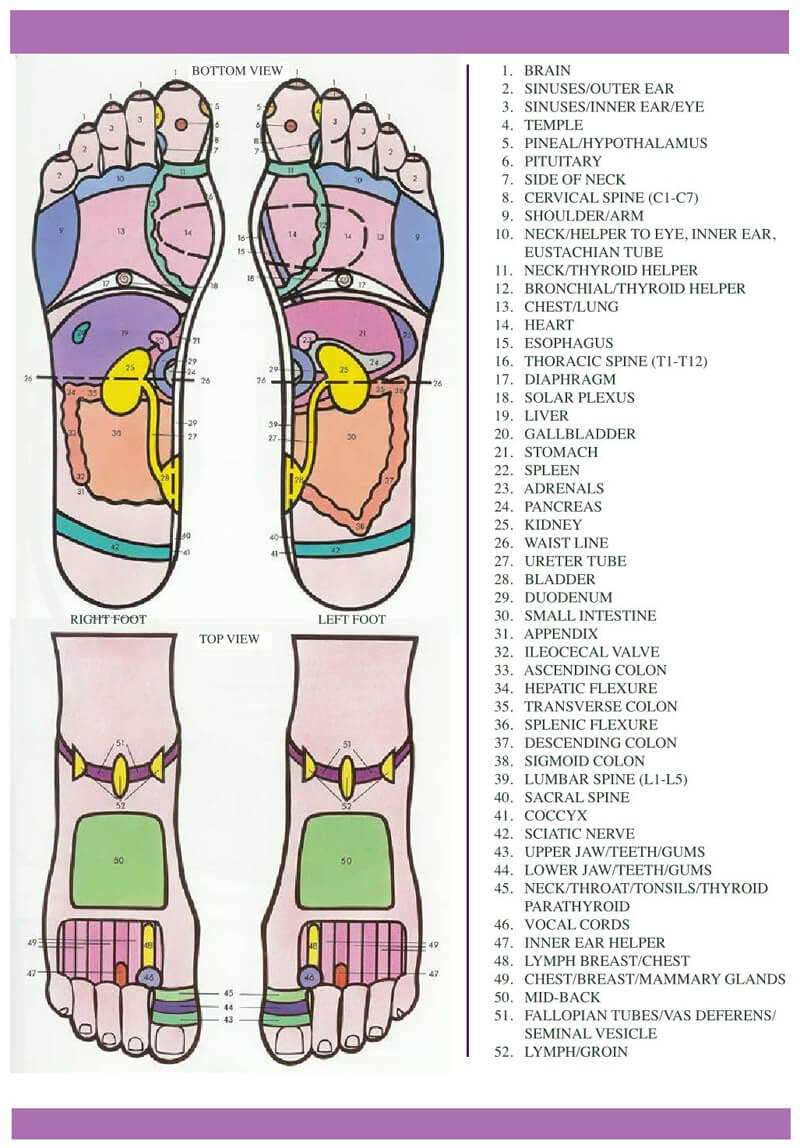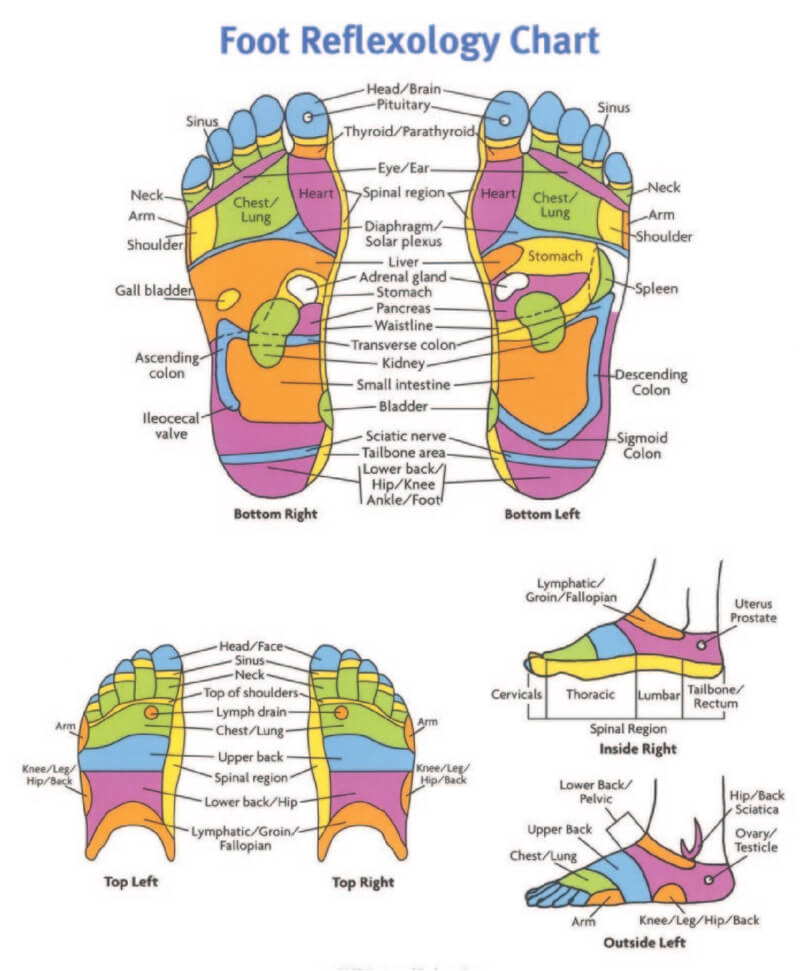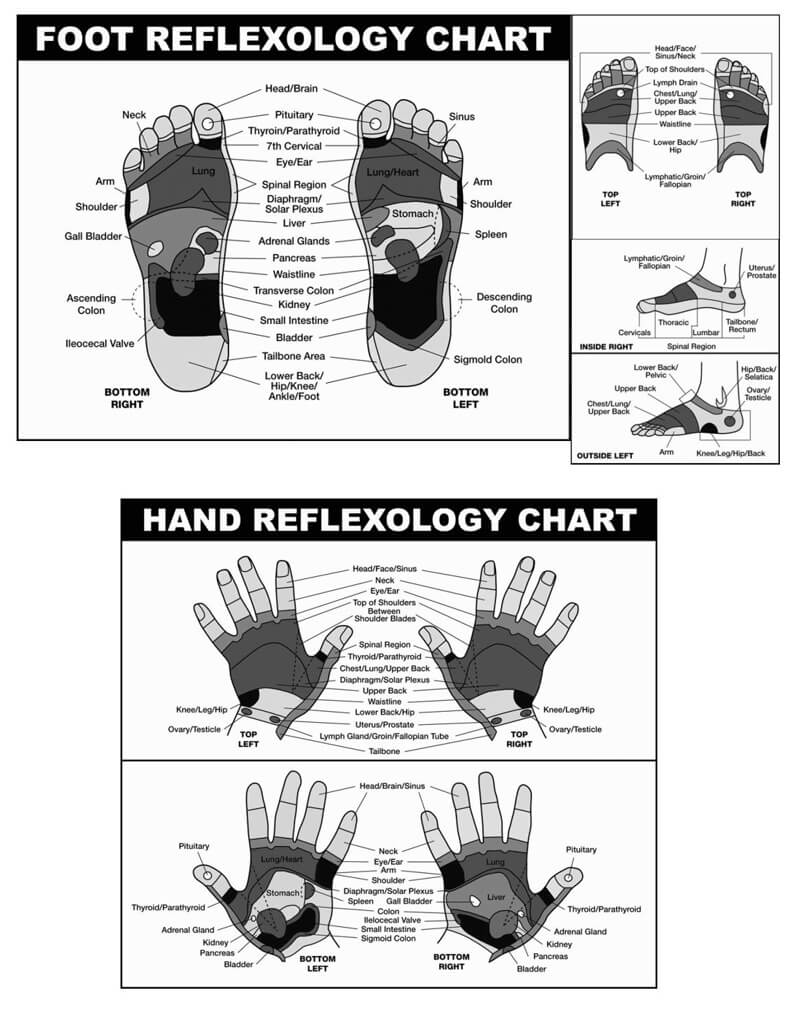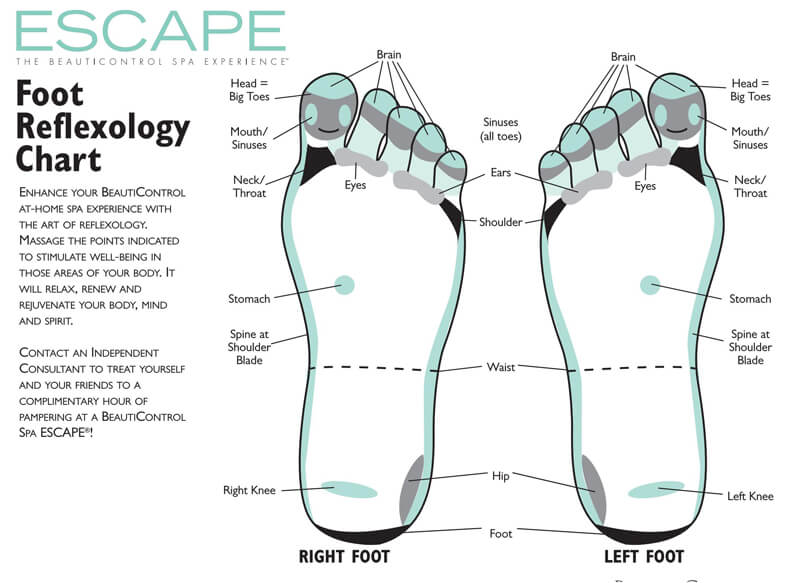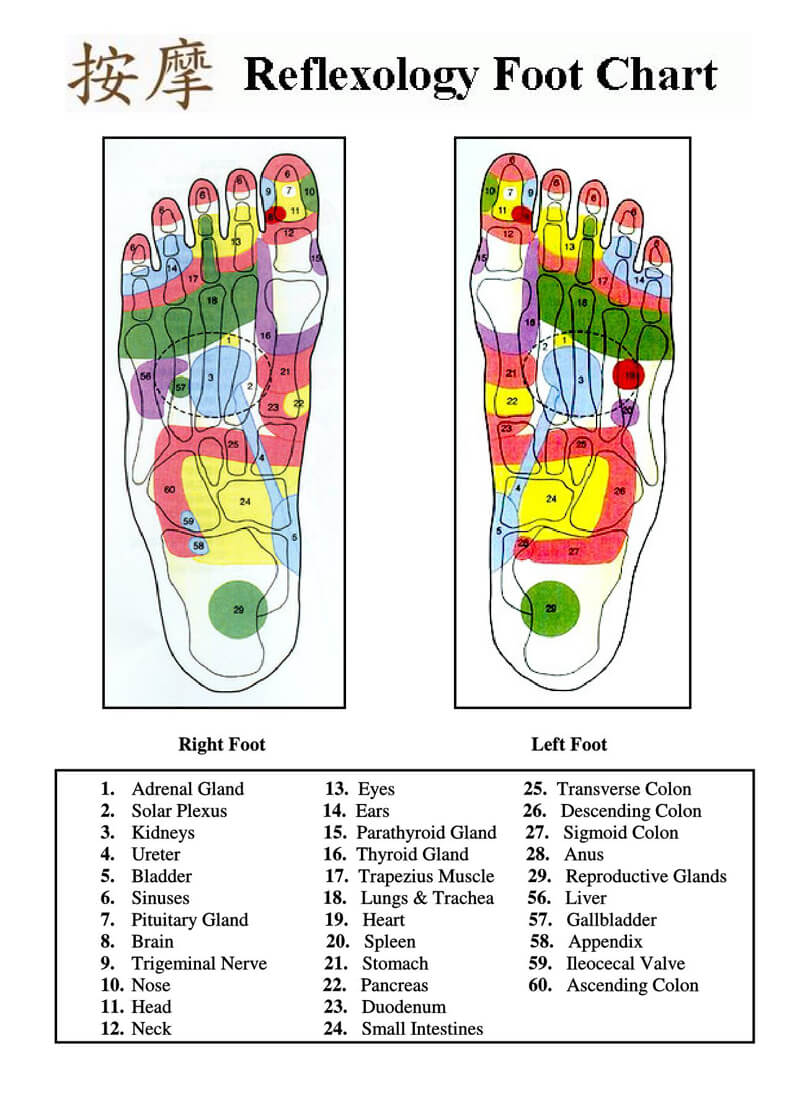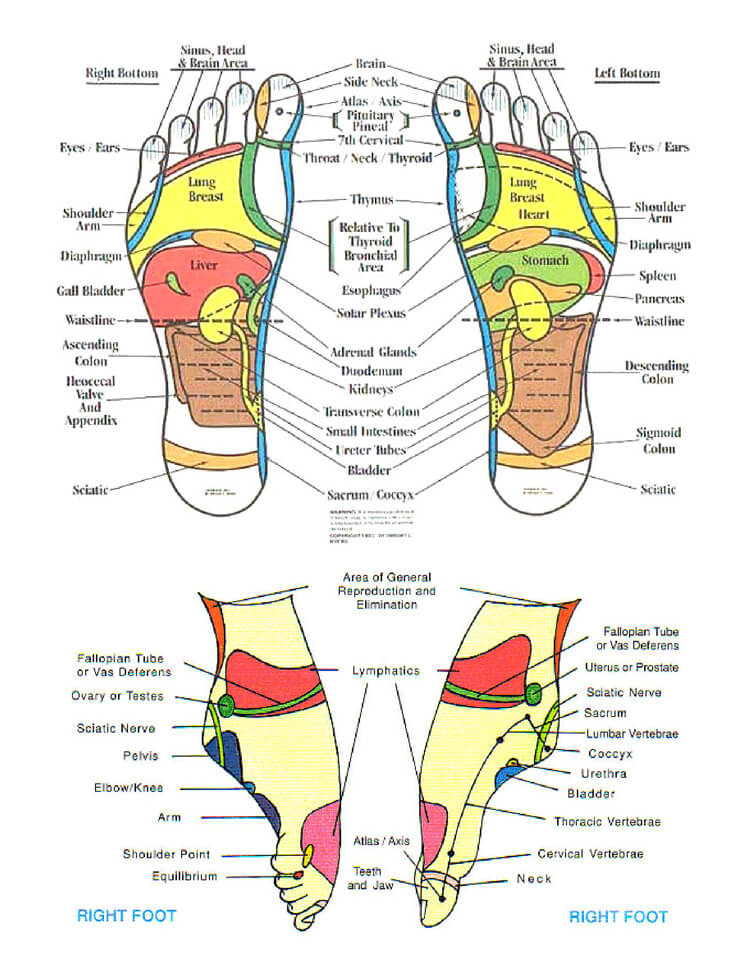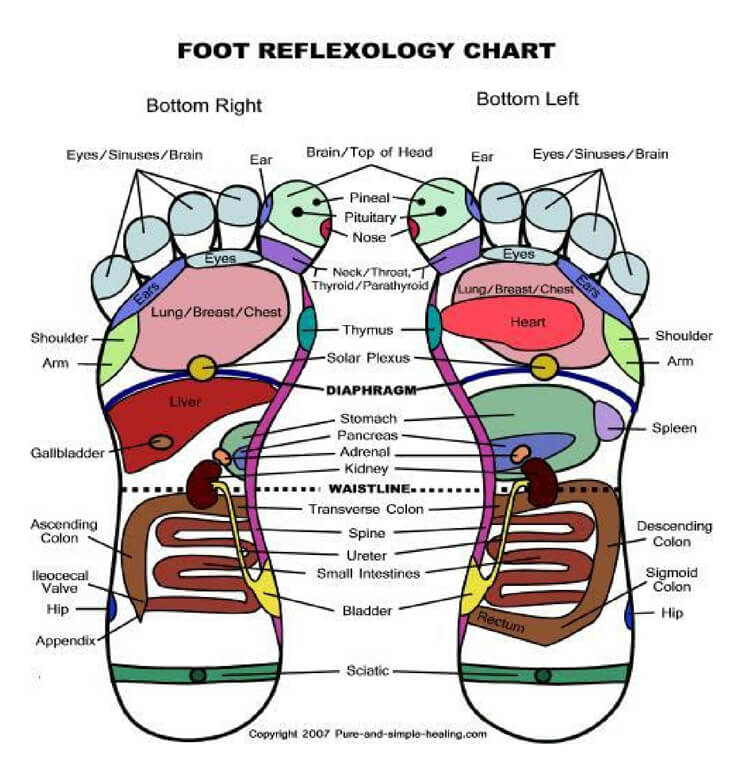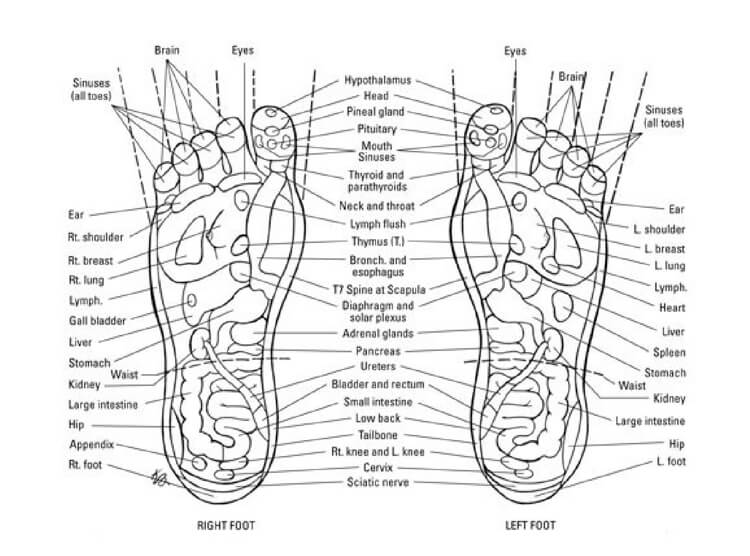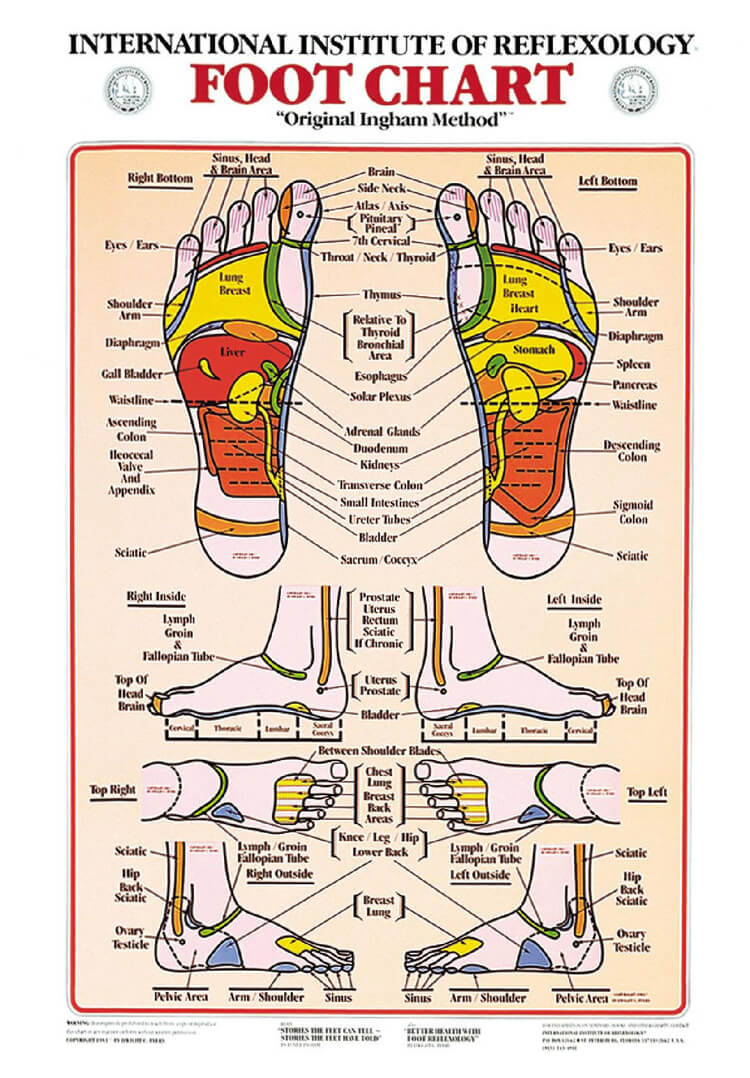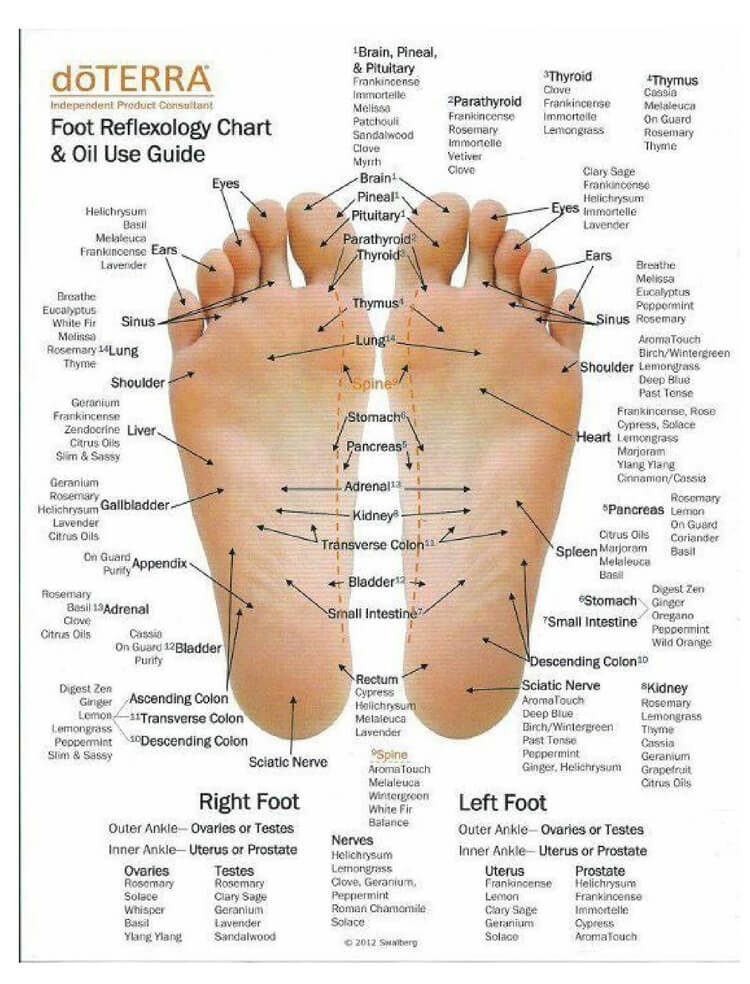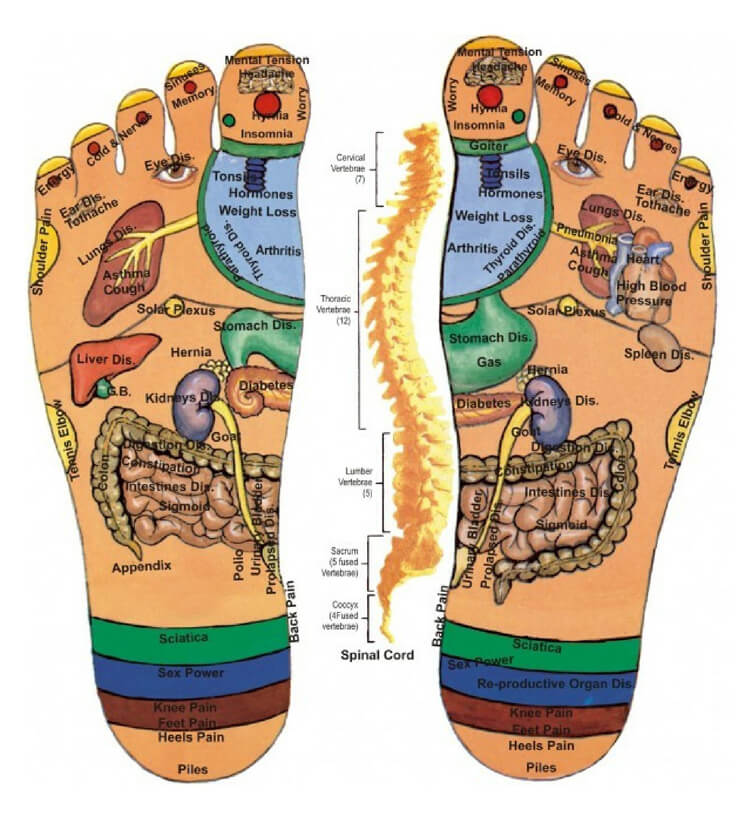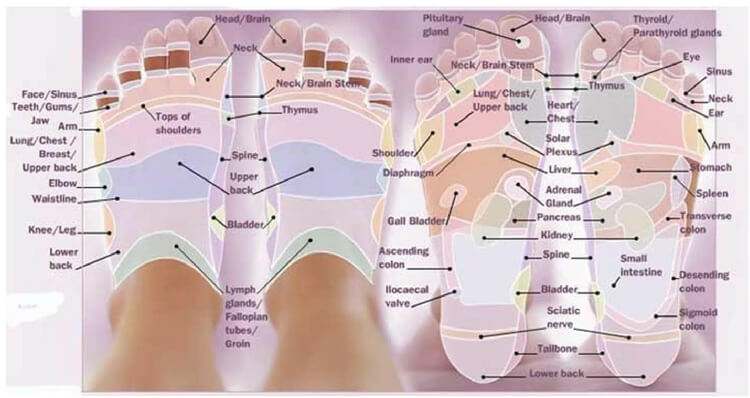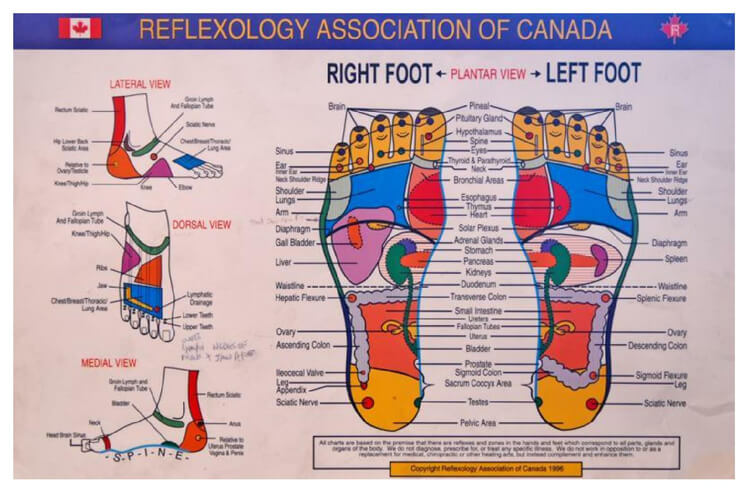A foot reflexology chart is a popular tool used in medicine to identify foot reflexology points. Since reflexology is practiced across the world, there’s no general agreement on the locations of the specific reflexology points on the human body, including the feet. Nevertheless, most reflexologists usually divide the body into ten vertical zones, five parts on each side that the energy of the body is said to flow. That means that if you would like to relieve body discomforts on a particular side, you will have to select the corresponding foot. Here we’ll look at what a foot reflexology chart is, how it works, and the benefits of a foot reflexology chart.
Understanding Reflexology
Reflexology, also known as zone therapy, is a popular alternative medicinal therapy that utilizes various techniques to apply some targeted pressure and massage on certain points of the human body. The fundamental theory behind reflexology states that there are specific areas known as reflex points on the feet that are energetically connected to specific body parts and organs through some energy channels in your body.
By applying some pressure to the reflex points, a reflexologist removes energy blockages to promote health and relieve pressure in the related body part. These professionals usually focus on the ears, feet, and hands, believing that these areas are directly connected to other parts of your body and can provide a therapeutic effect to your organs as well as other parts of the body when stimulated.
Generally, reflexology isn’t the same thing as normal massage, which involves rubbing certain muscles to relieve body tension. Instead, reflexology stimulates the organs and nervous system to relieve tension in various parts of the body.
Reflexology Points
The body has more than 800 pressure points, but only 15 of them are found on the feet. Almost all parts of your body have a corresponding reflex area on your foot. The left foot normally corresponds to all the organs located on the left side of your body, and vice versa.
However, not all medical experts agree on the precise location of reflex areas, but there is a universal agreement on the major points. Generally, there are four main reflexology points on the soles of every foot. The neck and head area involve all five toes. In this section, you will find different points corresponding to the eyes, ears, and sinuses, among others.
- The chest area is found around the foot’s ball. This part is generally darker in color than the center of the foot. It’s connected to the shoulders, lungs, etc.
- The spine, which goes up the inside of every foot, is situated where the toes connect to the rest of the foot. This area is the most vital reflexology zone and acts as a highway for all communications between your nerves, your brain, muscles, and bones.
- The pelvic area is found at the heel. It’s typically darker in color, just like the chest point of the foot. This part of the feet corresponds to the buttocks and legs.
- The “waistline” is situated wherever your feet are widest. This part correlates with the liver, intestines, stomach, etc., and is generally lighter in color.
Free Foot Reflexology Charts
Here are free downloadable foot reflexology charts:
Benefits of Foot Reflexology Charts
Your feet go through a lot of stress each day. Generally, there’s no part of the body, which is more misused than your feet through standing, jumping, and running. Reflexologists believe that the general health of your organs begins in your feet and then travels up.
The advantages of foot massage are normally endless without mentioning how great it feels downright. Although there is no documented evidence to prove what using a foot reflexology chart can do, both patients and practitioners claim that foot reflexology chart can:
- Prevent and cure diseases
- Cure colds and other minor ailments
- Increase your energy
- Improve lymph and blood circulation
- Relieve pain, anxiety, and stress
- Prevent injuries
- Relieve pain from chemotherapy
- Relieve pressure on feet and legs in pregnant women
- Stimulate internal organs activity
- Successfully treat constipation, IBS, liver dysfunction, skin allergies, and chronic headaches.
The benefits are not entirely physical. Using a Foot reflexology chart can also boost your emotional and mental state. Most of the individuals who seek the services of a reflexologist are generally looking for stress relief and relaxation. If your life has less stress, your chances of heart disease will drop significantly.
Conclusion
Although reflexology should not be utilized as a sole form of treatment for any medical condition, it can be used as a relaxing therapy for the feet with full-body benefits. Most people feel relaxed and calm after a foot reflexology session. Occasionally, some individuals feel nausea, mood swings, and sleepiness. Unfortunately, not everybody is a candidate for reflexology. If you suffer from medical conditions such as athlete’s foot, osteoporosis, or plantar warts, you should avoid foot reflexology. Always look for a trained reflexologist and also remember to check with your doctor to see if this therapy is right for you.
